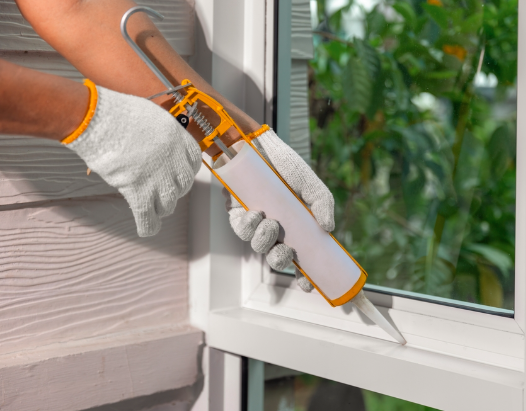
Sealants play a crucial role in any construction project, ensuring that gaps, joints, and seams are effectively sealed against environmental elements like moisture, air, and dust. Whether it’s for waterproofing, thermal insulation, or aesthetic finishes, the right sealant can dramatically improve the longevity and performance of a building. However, with so many different types of sealants available, it can be challenging to choose the best one for your specific construction needs.
This guide will help you understand the factors you need to consider when selecting a sealant for your project, including the various types, their applications, and how to calculate the right amount of sealant using tools like a mastic calculator. Let’s dive into the essential considerations to help you make the right decision.
1. Understanding Sealants: What Are They and Why Do You Need Them?
Sealants are materials used to block the passage of fluids through surfaces, joints, or openings in materials. In construction, they are commonly used to fill gaps between building materials to prevent the ingress of water, air, dust, or other external elements. Sealants can also provide thermal and acoustic insulation, making them crucial for energy-efficient buildings.
There are different types of sealants, including silicone, polyurethane, acrylic, and butyl-based options, each with its own properties and specific uses. The key to choosing the best sealant lies in understanding the nature of your project and the performance requirements.
2. Key Factors to Consider When Choosing a Sealant
When selecting a sealant, there are several important factors to keep in mind:
a. Type of Material
The first thing to consider is the material you’ll be applying the sealant to. Different sealants adhere better to specific materials, so understanding the substrate (concrete, metal, glass, wood, etc.) is essential. For example, silicone sealants are ideal for non-porous materials like glass and metal, while polyurethane works well with porous materials like wood and masonry.
b. Environmental Conditions
Next, consider the environmental conditions the sealant will be exposed to. Will it face extreme temperatures, UV radiation, or continuous moisture? Outdoor sealants, especially those used for roofing or windows, need to be weather-resistant. Silicone-based sealants are typically UV-resistant and waterproof, making them suitable for outdoor use, while acrylics are better suited for indoor applications.
c. Movement Capability
Sealants are often applied to joints that are subject to movement due to thermal expansion, structural settling, or vibrations. You need to select a sealant with sufficient elasticity to accommodate these movements without cracking or losing adhesion. Silicone and polyurethane sealants generally offer excellent movement capabilities, making them ideal for areas prone to expansion and contraction.
d. Durability and Longevity
The longevity of the sealant is another critical consideration. Some sealants, like silicone, can last for decades without needing to be replaced, whereas others, such as acrylic, may require more frequent reapplication. If you’re working on a long-term project, investing in a high-quality, durable sealant can save you time and costs in the future.
e. Aesthetic Requirements
Sealants aren’t just about function—they also play a role in the overall appearance of the project. For instance, if you’re sealing joints in visible areas like windows or countertops, you may want to choose a sealant that can be painted or that matches the color of the surrounding materials. Acrylic sealants are often preferred for these applications due to their paintable surface.
3. Types of Sealants and Their Uses
There are several common types of sealants used in construction, each suited to specific applications:
a. Silicone Sealants
Silicone sealants are highly flexible, waterproof, and resistant to extreme temperatures. They are commonly used for glazing applications, sealing windows and doors, and in bathrooms and kitchens due to their ability to prevent mold growth. Silicone is a versatile option but can’t be painted, which might limit its use in certain aesthetic applications.
b. Polyurethane Sealants
Polyurethane sealants are extremely durable and have high adhesion to a wide range of surfaces. They are often used for outdoor applications, such as sealing roofing joints, expansion joints, and concrete surfaces. Polyurethane can be painted, which is a plus for projects where aesthetics are a concern. However, they aren’t as UV-resistant as silicone sealants, so they may degrade faster when exposed to direct sunlight.
c. Acrylic Sealants
Acrylic sealants are commonly used for interior applications, particularly where aesthetics are important, because they can be painted over. They are ideal for sealing gaps in walls, ceilings, and baseboards. However, they are not as flexible or durable as silicone or polyurethane and are better suited for areas that don’t experience a lot of movement.
d. Butyl Sealants
Butyl sealants are typically used for waterproofing and sealing in areas with high moisture exposure. They have excellent adhesion properties and can be used in roofing applications, as well as sealing around windows, vents, and chimneys. Butyl sealants tend to remain flexible over time but can be messier to apply due to their tacky nature.
4. Using a Mastic Calculator to Determine the Right Quantity
Once you’ve selected the right type of sealant, the next step is calculating how much you need for your project. This is where tools like a mastic calculator come in handy. These calculators allow you to input the dimensions of the joint or area you’re sealing and provide an estimate of how much sealant is required.
To use a mastic calculator, you typically need to know the width, depth, and length of the joint, along with the type of sealant being used. The calculator will then provide an accurate quantity to ensure you purchase the right amount, minimizing waste or shortages. It’s especially useful for larger projects or when sealing multiple areas with varying joint sizes.
5. Application Tips for Best Results
No matter how high-quality the sealant is, improper application can lead to failure. Here are some key tips to ensure a successful sealing job:
a. Surface Preparation
Ensure that the surface is clean, dry, and free of dust, debris, or old sealant. If necessary, use a solvent or cleaner to prepare the area. Proper surface preparation ensures better adhesion and a longer-lasting seal.
b. Use a Proper Caulking Gun
A quality caulking gun makes all the difference in applying sealant smoothly and evenly. It provides better control over the application, especially when working with thicker sealants like polyurethane.
c. Apply Consistent Beads
Apply the sealant in a continuous bead along the joint, using steady pressure to avoid gaps or air bubbles. For larger joints, you may need to apply multiple layers or backer rods to fill in the space before applying the final bead of sealant.
d. Tool the Joint
Once the sealant is applied, use a tooling tool or your finger to smooth and shape the sealant. This helps create a consistent finish and ensures better adhesion to the substrate.
6. Common Mistakes to Avoid
Choosing the wrong type of sealant or miscalculating the amount needed can lead to costly mistakes. Always make sure to:
- Use the mastic calculator to ensure you’re purchasing the right quantity.
- Test a small area first to ensure the sealant adheres properly and looks good.
- Allow adequate curing time based on the manufacturer’s instructions.
Conclusion
Choosing the best sealant for your construction project requires careful consideration of the material, environmental conditions, and movement capabilities. Whether you opt for silicone, polyurethane, or another type, using the right sealant can extend the life and performance of your building. Don’t forget to use a mastic calculator to ensure you buy the right amount of product, reducing waste and avoiding the need for multiple trips to the store.
By selecting the correct sealant and applying it properly, you can protect your construction project from leaks, drafts, and environmental damage, ensuring long-lasting results.
